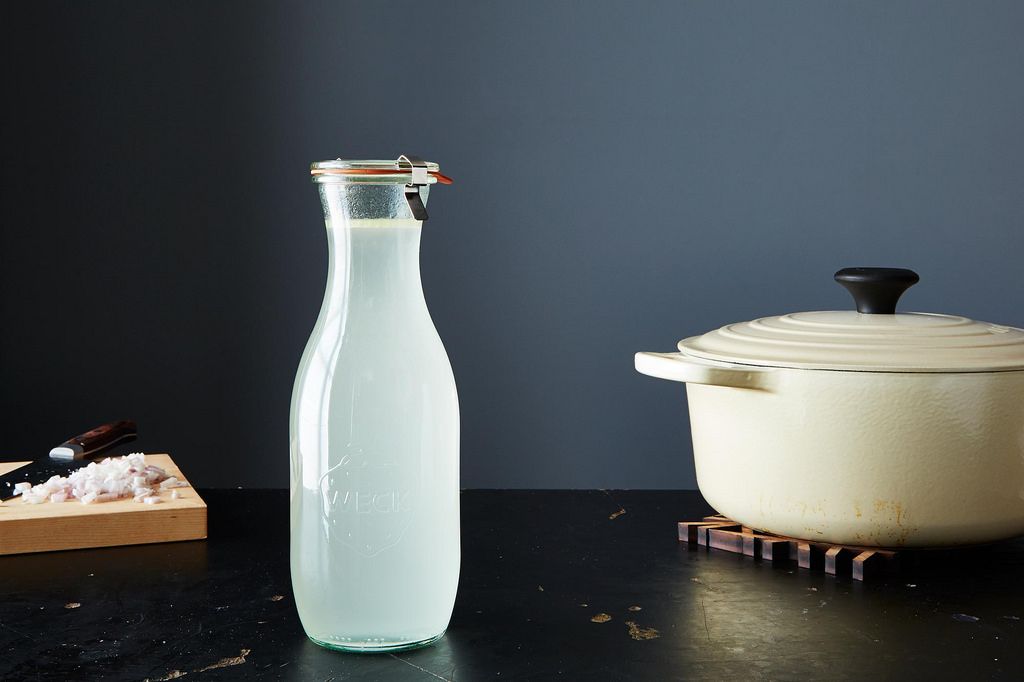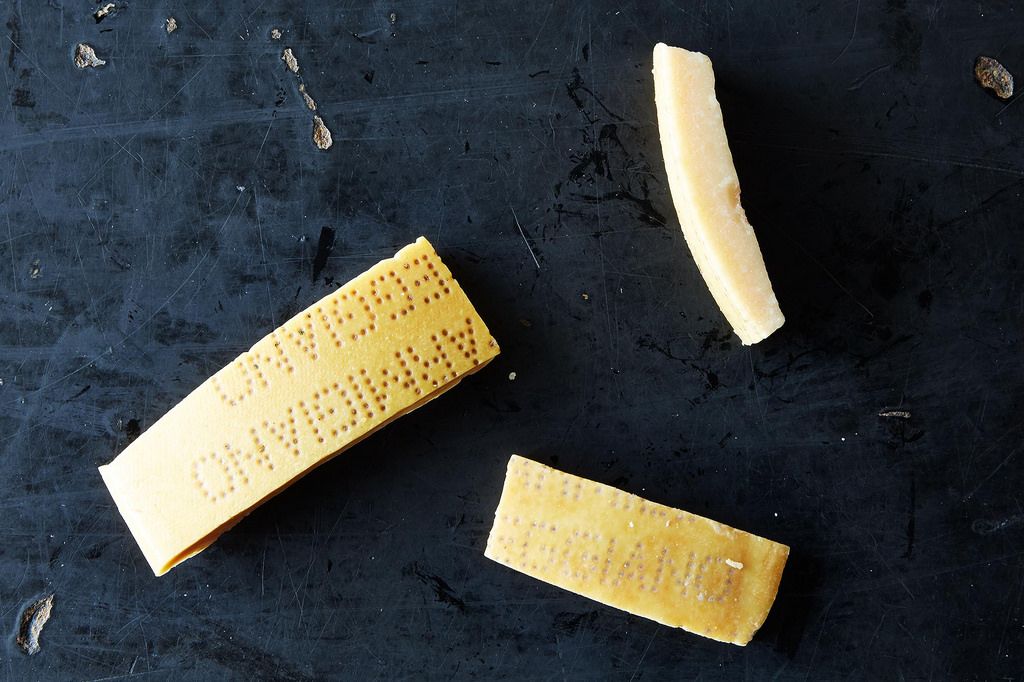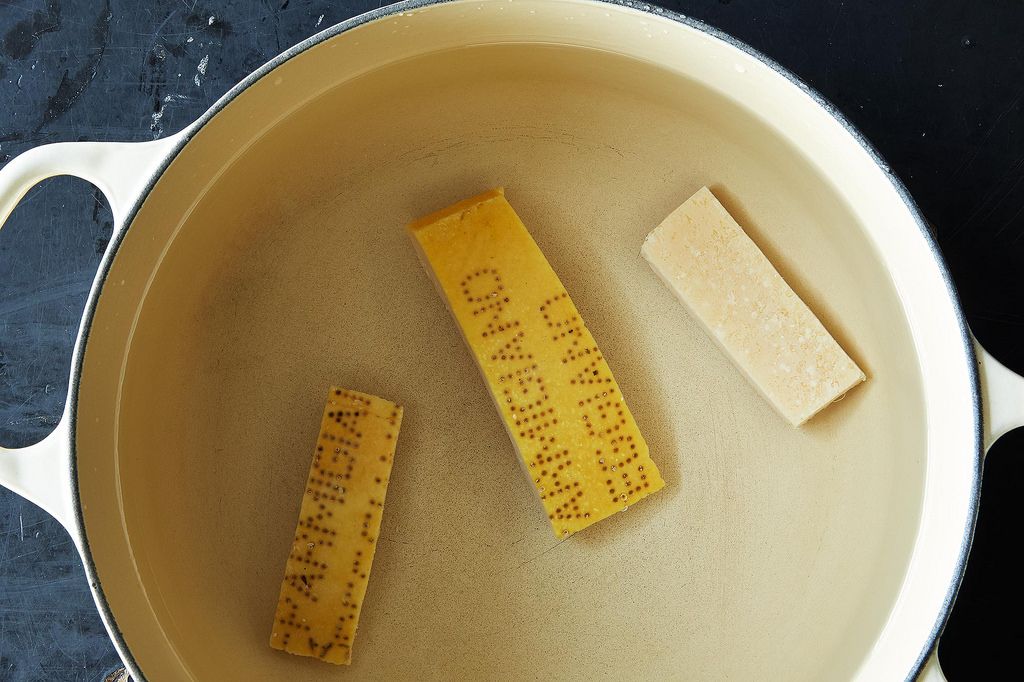Popular on Food52
54 Comments
Margaret
January 12, 2024
Could this broth be pressure canned? I pressure can beef, chicken, and ham broth instead of buying them at the store. Plus home canned broth is so convenient…
CarolCuevas
February 27, 2022
This may sound like heresy to the great Eastern European people, but after several drinks with the ladies at a culinary retreat, we decided to boil our homemade perogies in some of the rind broth. Yes, we went there. These rind broth perogi went quite well with vodka martinis......the parm/pecorino flavor was obvious, but subtle. Just another layer of amazing flavor.
If I always had enough rind broth, I'd probably use it in many applications. That's why we must always save the rinds.
Once when I made a large 12 cup portion, I froze the leftovers in 2 cup portions. Always good to have it on hand...
If I always had enough rind broth, I'd probably use it in many applications. That's why we must always save the rinds.
Once when I made a large 12 cup portion, I froze the leftovers in 2 cup portions. Always good to have it on hand...
bekoz
November 8, 2019
Parmesan broth as a soup base is delicious. Also use a couple of rinds in marinara sauce for added flavor, then remove rinds before serving to scrape off the oozy soft cheese for a baguette treat topped by spoonful of sauce.
J
August 1, 2018
Hi, SusanRos. When I used to make brodo before the Instant Pot, I always strained out everything left in the pot, especially since I put every type of cheese rind in there. The key is using cheap grocery-store cheesecloth, the type that is full of holes: that will keep everything you need and strain out everything you don't.
SusanRos
July 31, 2018
So after a couple of hours of simmering, the rinds had disappeared but there were curd-y "blobs" of some cheesy something left at the bottom. "Blobs" might be giving them greater clumping quality than they had. Maybe "curdy-y residue" is more accurate. You keep those or strain them out?
J
July 16, 2018
I've been making cheese brodo for years, but recently tried it in my Instant Pot: first I sauteed onion and garlic in a little EVOO, then used 10 minutes LOW + 10 minutes natural release. Perfect! I was VERY thankful that I have a nonstick Instant Pot inner pot! Strain with 1 layer of cheap supermarket cheesecloth (the good cheesecloth is too fine). I freeze the brodo in 2-cup quantities and use in soups and mac & cheese.
Jane D.
March 11, 2018
oops, got so carried away thinking about the rind bits, i forgot to mention that this sounds pretty good, too and will try it in things like polenta and risotto where the rinds might not be quite as welcome left in the pot.
[you need an "edit" function... ;-) ]
[you need an "edit" function... ;-) ]
Jane D.
March 11, 2018
i have always chopped my rinds into bite-sized pieces and tossed them into minestrone or marinara (eg) and then *left them in* for a chewy, cheesy bite in the soup or sauce. hubby (i call him "the cheese troll" cause he appears over my shoulder from out of nowhere when cheese comes out of the fridge...) loves the little gooey, cheesy bits of rind, flavored with the sauce.
as long as they remain in the liquid, they stay soft and chewy... and delicious!
as long as they remain in the liquid, they stay soft and chewy... and delicious!
Catherine S.
March 8, 2018
Pop bite-sized pieces of rind in the microwave to make cheese puffs. Eat them warm though. They toughen up as they cool. My kids (and dog) love them.
HeidiN
February 28, 2018
When the broth is finished reducing instead of straining the grit, has anyone put it through a blender? Or is it better to strain?
Fred R.
February 28, 2018
What do you mean by “reducing?” The pasta takes up liquid, and I add that much water back when ready to use again. In my world there is no reduction of volume by boiling....reducing. No straining either, and to be told there is a lot of “junk” in the pot. Don’t make too much of all this, your just adding Parmesan rinds to boiling water. Good luck.
Kay D.
October 21, 2017
I just toss a rind (or two, depending upon size) in whatever I want to have that flavor. Broth base, tomato sauce, escarole... I've never found the need to make a separate broth with them.
Fred R.
January 10, 2017
And, the comment that it will last for three months in the freezer is nonsense. Mine, with water added each time to make up for the pasta uptake (and a few rinds here and there) must be going on 10 years in and out of the freezer. The liquid is somewhat mellow and delicious.
Charles J.
April 10, 2017
fred! what do you do? defrost every time you make pasta and then re-freeze again?
Fred R.
April 10, 2017
I do. Usually just take two one and a half quart containers out of the freezer, add water to make four quarts, and cook pasta. When refreezing, I don't add water if low, and just throw out if there is a little too much water. If I am lucky, I remember to take the containers out of the freezer in the morning, and, if not, well that's what microwaves were made for. Best.
Fred R.
January 10, 2017
By the way, I buy my rinds at Whole Foods for $11./lb. Might sound expensive, but you only add water forever (well maybe a few more rinds now and then), but the pasta water is forever Zen (and rich with starch and Parmesan). Enjoy.
beejay45
February 24, 2018
Brilliant, the pasta starch water with Parm broth! I just cleaned out my fridge and found two wedges of Parm in the back that were totally dessicated, not grate-able at all. I'm going to try to break them up for this broth and use it for pasta. I'll have a huge supply! ;)
Fred R.
January 8, 2017
If you add about one teaspoon sodium citrate per gallon of water you will have almost no "rind grit" in the finished broth. I use this broth as pasta water....over, and over, and over again.
Carol H.
February 9, 2016
I used the parmesan broth to make a heart warming tortellini soup! Top with fresh parsley and freshly grated parmesan.
Martina
July 20, 2015
I have tried this recipe yesterday and now my broth is in the fridge waiting to be used for a creamy risotto! Thank you for this eco recipe! Martina
Here is my post: http://www.trattoriadamartina.com/2015/07/brodo-di-croste-di-parmigiano.html
Here is my post: http://www.trattoriadamartina.com/2015/07/brodo-di-croste-di-parmigiano.html




See what other Food52 readers are saying.